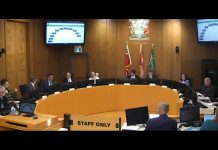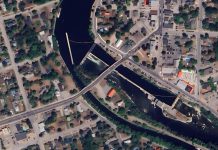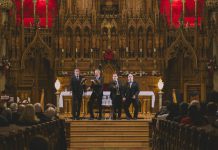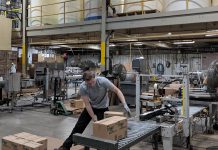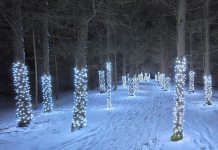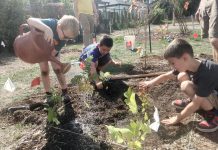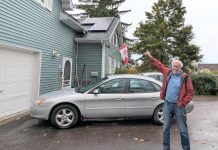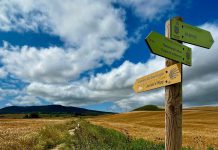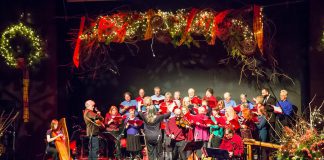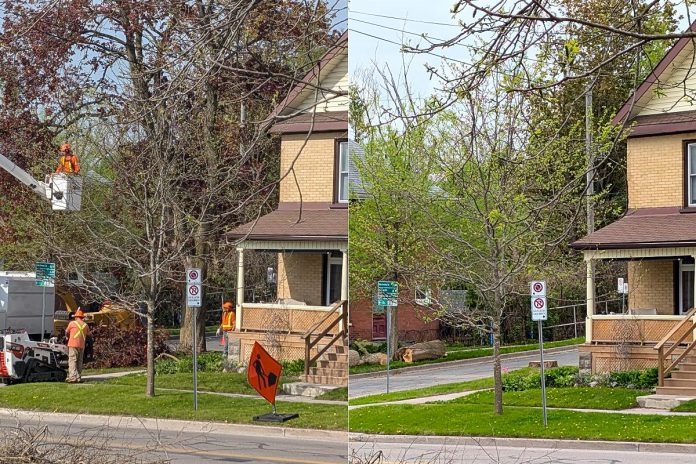
Some Peterborough residents are upset that city-owned trees on the easement portion of their property, such as a boulevard beside a sidewalk, have been removed with no prior notice or explanation from the city.
That includes several residents in an East City neighbourhood who, earlier this week, were surprised and alarmed when arborist crews appeared and began taking down several mature trees that appeared to be healthy.
According to an email from Bob Pitchford, operations manager of public works for the City of Peterborough, trees are being removed that the city’s urban forestry technologists have identified as hazards. The city has 20 to 25 contracted arborist crews that are working to remove the identified trees based on a list provided to them by city staff.
While the work is being done as part of the city’s response to the damage caused by the ice storm at the end of March, trees may be removed for reasons other than ice storm damage.
“Trees are not being removed based on how much damage they suffered as a result of the ice storm,” Pitchford says. “They are being actioned based on the overall tree health and level of risk they pose. We have identified several trees requiring removal due to high likelihood of failure despite suffering no storm damage. This has only been the initial risk assessment process and a more thorough and in-depth tree risk assessment is still yet to come.”
Pitchford says the city does not remove healthy trees “under any circumstance” — only trees that are badly damaged or “found to be in a high likelihood of failure.”
“If the tree was in good health and suffered minimal damage then a pruning order was issued to simply prune out storm damage and improve the overall health of the tree,” Pitchford says.

A foreman of one of the city-contracted crews told kawarthaNOW that crews have the discretion to remove a tree that has a pruning order if they determine the tree is a hazard. According to Pitchford, the reverse is also true.
“The contractors in the field have the skills and ability to prune a tree that is slated for removal should they feel the tree can be saved, and vice versa — they can remove a tree that is slated to be pruned if they feel the damage is too extensive.”
Prior to the work beginning, the city did not issue a media release, and Pitchford says no advance notice will be provided to residents who will lose trees. He notes the city is not following the normal process where an orange dot is sprayed on the trunk of a tree that will be removed.
“Given the mass volume of trees we are dealing with post-ice storm, we have not taken the time to paint each tree slated for removal,” says Pitchford, adding that — aside from marking trees to be removed — the city does not normally provide any formal notice to residents when a tree is slated for removal, with the exception of ash trees which are part of a special program.
“We are simply actioning trees as fast as possible to reduce the likelihood of failure and to best manage our level of risk.”
For residents who have had a city-owned tree removed, Pitchford says the city normally replaces every tree within two to three years from removal. According to the city’s website, stump grinding takes place the year after removal and replanting the following spring or fall.
“Having said that, these are not normal operations and the city cannot provide timelines on the lengthy process ahead of us, with over 3,500 service requests and possibly over a thousand of those being removals,” he says. “This process will take time but we continue to make every effort to complete the process as quickly as possible.”
Pitchford says the city’s urban forestry technologists have also inspected trees in city-owned parks, marking trees slated for removal with a diagonal slash and those requiring pruning with a line and arrow.
In a median of the parking lot at Beavermead Park, at least 12 mature trees have been removed, all of which were ash trees ranging from poor to moderate to good condition.
“The city of Peterborough has a duty of care to provide within our urban forestry canopy and we take every measure to ensure we maintain the tree canopy in a manner to mitigate risk and liability,” Pitchford says.



